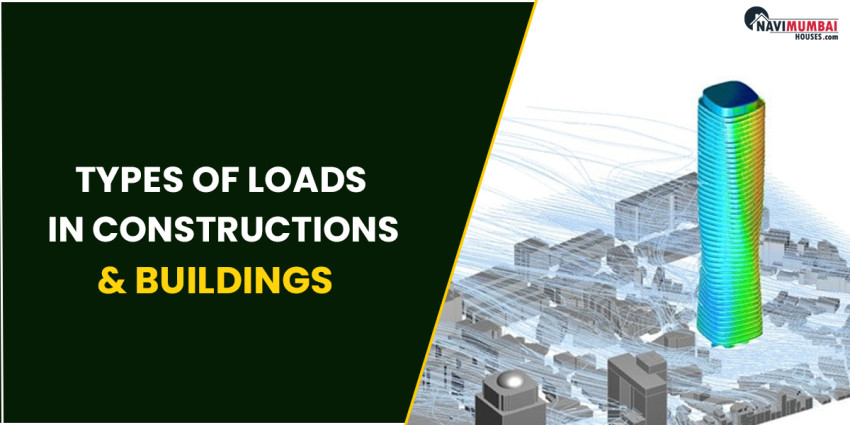
Types Of Loads In Constructions & Buildings
A structure may experience stress, displacement, and deformation due to a variety of loads, which might lead to structural issues or even structural failure.
The application of a force, deformation, or acceleration to structural components is known as a structural load. When a structure is under load, stress, deformation, and displacement are produced. Engineering's study of structural analysis focuses on how loads affect structures and structural components. Excessive load should be assessed and controlled during the structure's design since it can lead to structural failure. A structure may experience stress, displacement, and deformation due to a variety of loads, which might lead to structural issues or even structural failure. The challenge of calculating the overall load pressing against a structure is difficult and crucial.
A variety of loads
The three forms of loads in buildings and structures are vertical loads, horizontal loads, and longitudinal loads. Dead load, active load, and impact load are all types of vertical loads. A couple of instances of horizontal loads include wind and earthquakes. In some design situations, longitudinal loads like tractive and braking forces are taken into consideration. It is necessary to accurately analyse the various loads that are in operation. Different design loads for buildings and other structures are provided by the American Standard Code ASCE 7: Minimum Design Loads for Buildings and Other Structures and the Indian Standard Code IS 875-1987. Below, each of them is described in further depth.
Dead load
The weight of a structural parts, such as its beams, walls, roofs, and structural flooring components, is one type of dead load, sometimes referred to as a permanent load or static load. Dead loads include things like built-in cabinets, immovable fixtures, and permanent non-structural partitions. Dead loads involve the weight of the structure or any permanent components before any live loads are taken into account. The live and dead loads are added together to determine the structure's total loading. Any construction's dead loads are calculated by multiplying the volume of each section by the unit material weight.
Live load
In civil engineering, a load that may change over time is referred to as a "live load." When people walk around a building, the weight of the load changes or shifts. Anything within a building that is not attached to the structure might result in a live load since it can move about. Live loads are taken into consideration while calculating a structure's gravity load. The unit of measurement is pounds per square foot. The required minimum live-load is determined using the anticipated maximum load. Both a load operating on a limited area and a load that is uniformly distributed (UDL) can be used to define a live load. (point load). It could eventually be taken into account when computing gravitational loads.
Wind load
The flow of air in relation to a building can impose wind loads, and study of these stresses necessitates an understanding of meteorology, aerodynamics, and architecture. For small, big, and low-level structures, wind load might not be a major concern, but as height, lighter materials, and elements that could affect airflow, primarily roof shapes, rise, they become more significant. A structure may need additional construction and fittings if its dead weight is insufficient to sustain wind forces. In structural design, wind load must be considered, especially if the building's height is greater than twice the dimensions transverse to the exposed wind surface.
Load of snow
This stress that snow accumulation might cause is more of a concern in regions where snowfall is frequent and heavy. Snowfall may pile significantly, adding a large burden to a structure. The amount of snow load is significantly influenced by the shape of a roof. The snow loads on building roofs are addressed in the IS 875 (Part-4):1987 code. There are several factors that affect snow weight, including:
• Moisture content
• Accumulation
• Distribution
• Temperature variations
Earthquake load
The inertia force produced in a structure as a result of seismic excitations causes earthquake load to occur. With mass, the force of inertia varies. The seismic loading increases as the structure's mass increases. The structure will break or sustain damage when the load from an earthquake exceeds the moment of resistance of the element. The weight or mass of the structure, its dynamic properties, the stiffness difference between adjacent levels, the intensity and duration of the earthquake, as well as other factors, affect the magnitude of earthquake loading. Structures built on the ground or close by experience an earthquake's impact on their surface.
Load combination
When more than one type of load is applied to a structure, this is known as a load combination. To ensure the safety of the structure under various maximum expected loading circumstances, building regulations frequently include a variety of load combinations as well as load factors (weightings) for each load type.
Source From:-navimumbaihouses






